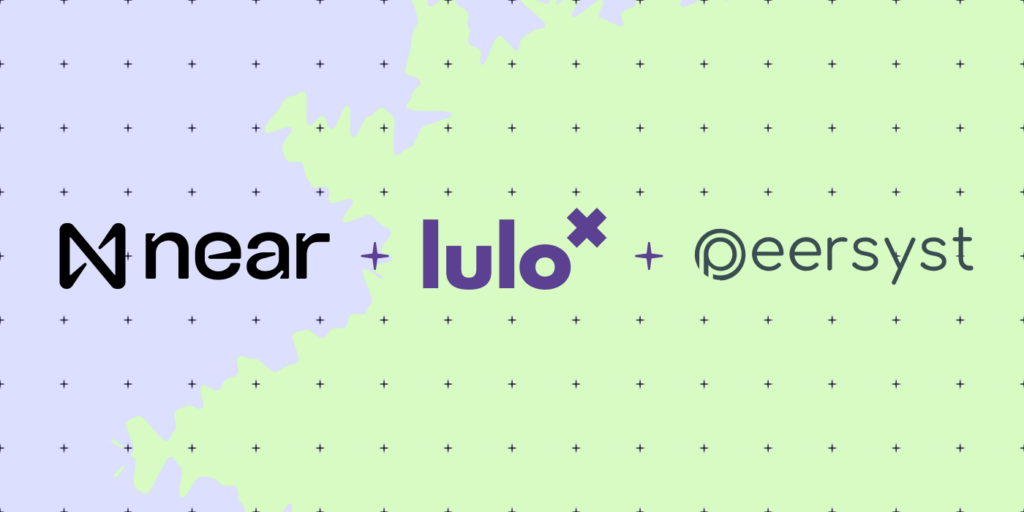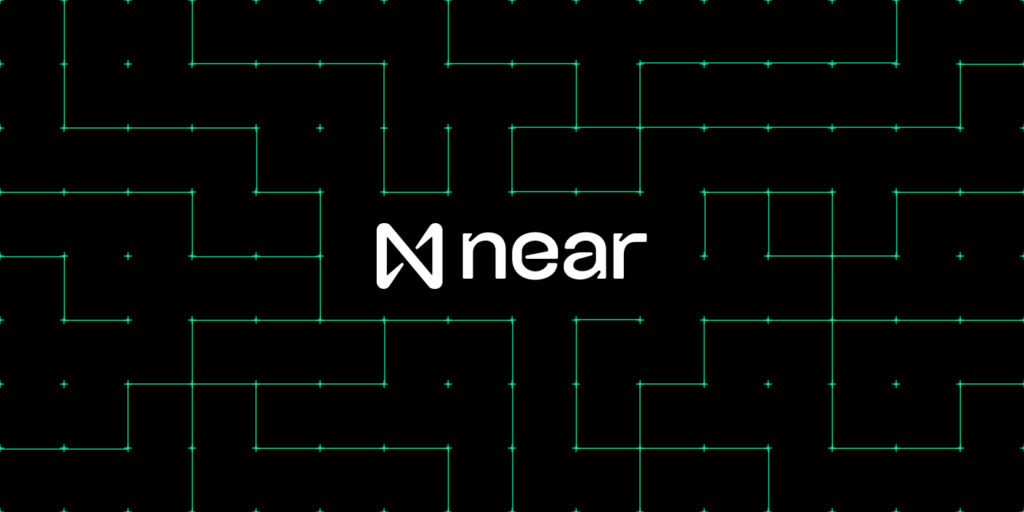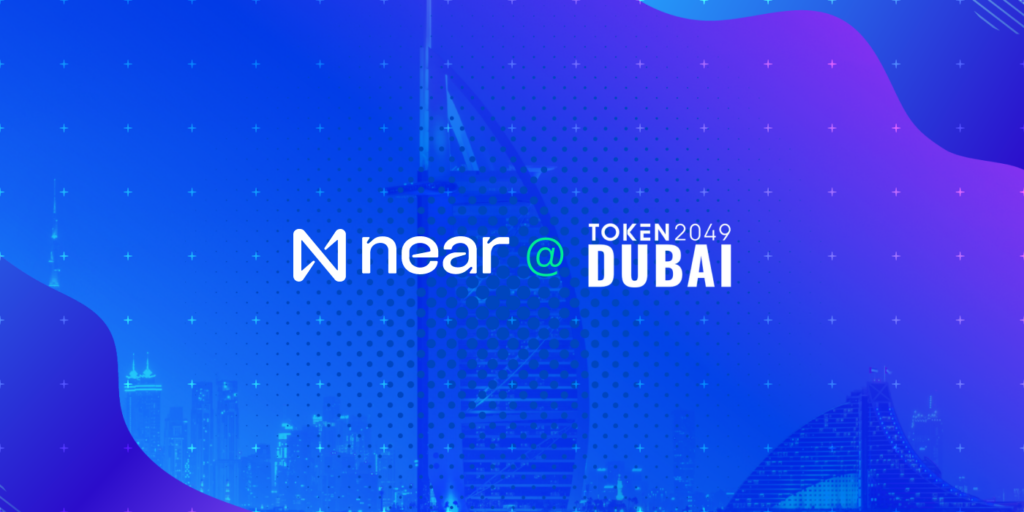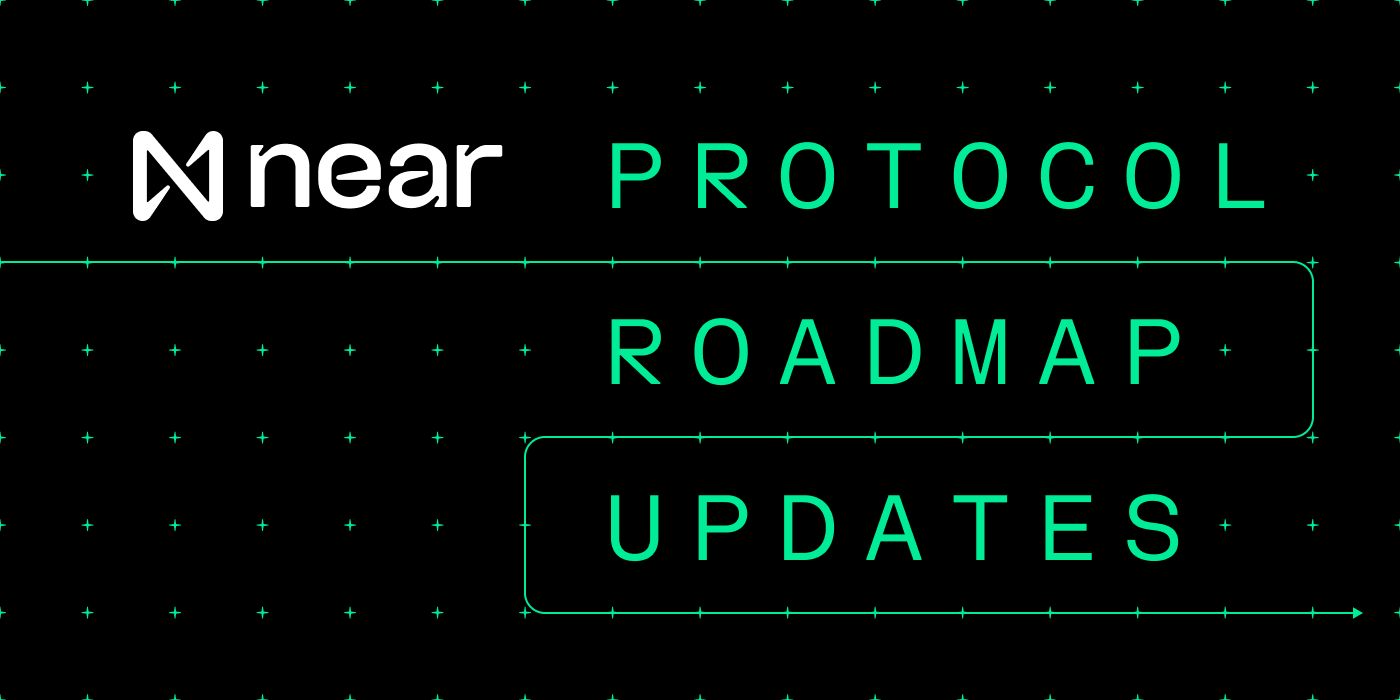NEAR Q4 Protocol Roadmap Update
By Bowen Wang, Director of Protocol
In this post, the NEAR Protocol work group would like to provide an update of the protocol roadmap to show what we accomplished in 2023 and what is planned for 2024.
TLDR: 2023 saw major experience improvements via meta transactions and zero-balance accounts, as well as node performance improvements and optimizations. Preparations are underway for a major upgrade to stateless validation, completing Phase 2 of the sharding roadmap in early 2024.
What we accomplished in 2023
There were a total of six protocol upgrades in 2023 which introduced a number of new protocol features. Meta transactions were added as a protocol feature at the beginning of the year to support gasless transactions, which means that users can transact on NEAR and start using apps without necessarily needing to pay transaction fees in NEAR. We also added zero-balance accounts, an important feature that enables users to create an account without holding NEAR to pay for storage. This makes it easy to onboard new users to applications. These two features form a solid foundation for a seamless onboarding experience for end users — a top goal for NEAR overall.
In addition to easy user onboarding, we have also been working hard to optimize the performance of NEAR. Flat storage, which was released in Q2 this year, optimized state reads and improved the stability and performance of the network overall. Another feature that optimizes NEAR nodes is cold storage, which allows for a split between hot and cold storage for a node. This means an archival node does not need to store most of the historical data on SSD and therefore can save a lot on cost. We also optimized the network communication between validator nodes by introducing the tier1 network, which reduces the latency of network messages between two validator nodes. Furthermore, we improved state sync and reduced the time it took a node to synchronize the latest state. We have also worked on improving the stability and maintainability of contract runtime with initiatives like finite wasm and limited replayability.
There are a few major initiatives that we started this year and expect to finish next year, such as stateless validation, congestion control, and transaction priority. We will dive deeper into those in the section below.
Plans for 2024
There are a few major projects that we want to deliver in 2024 to improve the usability, scalability, and decentralization of NEAR Protocol:
- Stateless validation. Stateless validation is a major initiative that we have been working on for a few months. It adjusts the original Nightshade sharding design to avoid implementing fraud proofs while improving the performance of each shard significantly by putting state in memory. The stateless validation work is expected to be delivered in Q2 2024, which would also mark the completion of the original goal we set for Phase 2 of sharding. We expect the launch of stateless validation to also dramatically increase the throughput of each shard and prepare NEAR for the continued growth of usage.
- Congestion control and transaction priority. While NEAR’s sharding design is horizontally scalable, it is important to provide a good user experience when there is short-term congestion on the network. This includes localizing congestion so that gas price increase does not affect the entire network and allowing users to prioritize their transactions during congestion if they are willing to pay more in transaction fees.
- Support for account aggregation. Account aggregation allows a user to control accounts on different chains with one NEAR account, an important pillar of the chain abstraction vision for NEAR. It requires chain signatures, which does MPC to sign payload. This requires a new runtime API to facilitate the asynchronous nature of chain signatures.
- zkWASM. We have been working on zkWASM with the Polygon team for a few months and the work will continue in 2024. The goal is to build a prover for WebAssembly smart contracts. This could be used as a part of the initiative to prove the state transition of NEAR in a ZK proof. Moreover, zkWASM also provides wasm as an alternative execution environment to EVM for L2s.
- Data availability improvements. We launched NEAR DA in early November 2023 and there are a few things that we plan to work on to further improve the efficiency of NEAR DA. Those improvements include introducing KZG commitment to avoid having data availability fraud proofs, as well as real-time bridging to allow verification of data availability on Ethereum.
- Ethereum wallet support. Supporting wallets like MetaMask natively on NEAR allows us to attract more users to NEAR and also be more Ethereum aligned. This requires changes to the protocol to support Ethereum addresses natively and support processing of RLP serialized Ethereum transactions.
- Research into the future of sharding. There are two major directions of exploration: synchronous sharding and ZK-centric sharding. Synchronous sharding enables synchronous execution of smart contracts and addresses the developer experience pain point of having to deal with asynchronous execution. ZK-centric sharding leverages zero-knowledge proofs to validate state transition of different shards and improves the scalability and decentralization of the protocol. In addition, we will also research the next and final phase of sharding: dynamically adjusting the number of shards based on usage.
The roadmap can be seen below for those interested in more timeline specifics. It is split into two parts: Experience and Core. The Experience section encompasses user and/or developer experience and the protocol features needed to enable those experiences. As an example, synchronous execution addresses the pain point that developers feel when they implement cross-contract calls.
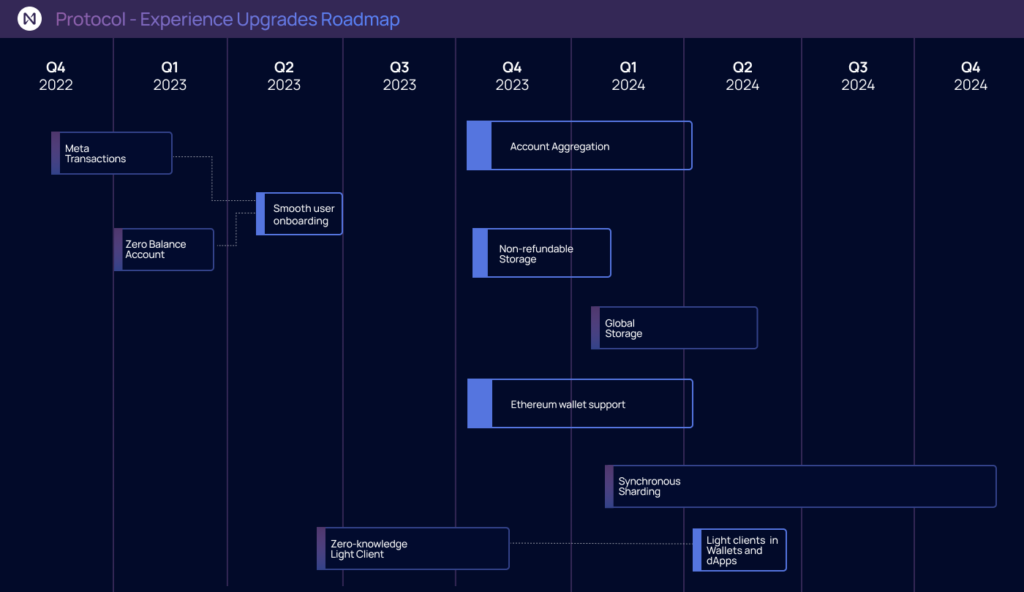
The Core section, on the other hand, covers major efforts to improve the scalability and decentralization of the protocol. This includes stateless validation, zkWASM, improvements to data availability, and so on.
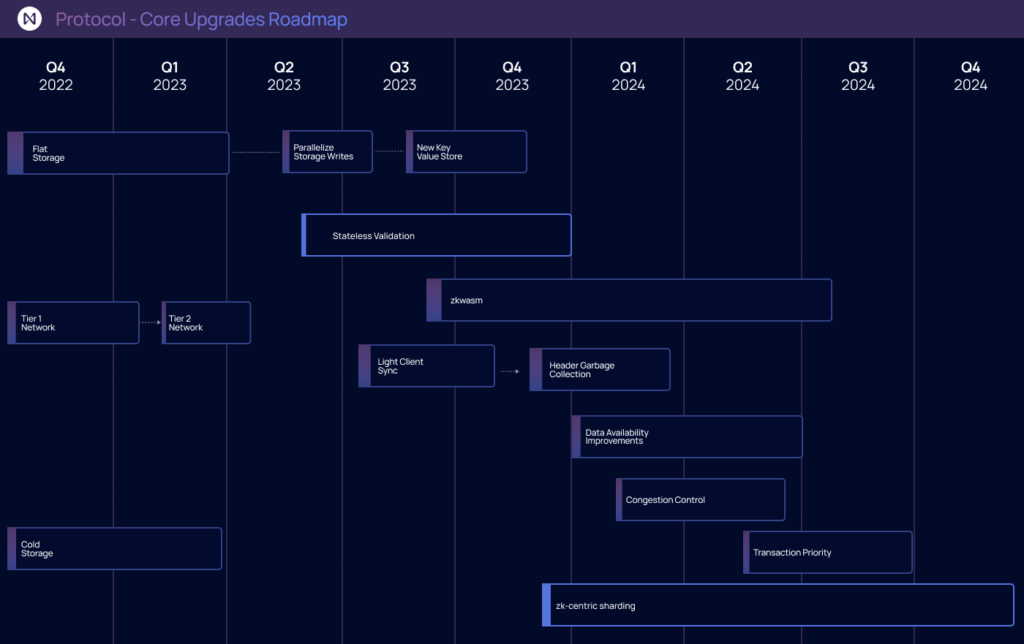
As always, the protocol team is proud to have made several important improvements to the core protocol with zero disruption for users and developers. We look forward to making some major advancements in 2024 to help the entire NEAR ecosystem deliver its vision of mainstream adoption of an Open Web, where all internet users can control their own data, assets, and power of governance.
We will share more details on Phase 2 advancements and timelines soon. If you’d like to learn more, join the NEAR Protocol X Spaces on Tuesday, January 16 at 5pm UTC to hear from Director of Protocol Bowen Wang and NEAR Foundation CEO Illia Polosukhin on upcoming protocol developments.
Share this:
Join the community:
Follow NEAR:
More posts from our blog
